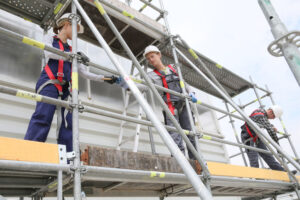Whether you’re attending an OSHA-approved safety training course or a basic safety training class that doesn’t require OSHA certification, safety training with Trivent Safety Consultants is always better to be done as a “hands on” approach. If you simply learn it theoretically, it won’t help you much, since chances are you won’t really know how to handle a real life situation where you have to act to prevent a health or safety hazard.
Classroom training is typically great for the intellectual aspect of safety training. For example, you don’t necessarily need to be a crane operator and go check on an actual crane to know what the areas are where cranes are most unstable. That information, given in a classroom, can save your life one day simply because you know not to approach a crane that is positioned in a dangerous place.
On the other hand, operating a fire extinguisher, using CPR and running drills for possible evacuation protocols within a building that has tight corridors and requires people to exit in an orderly fashion will be very important to be done on site. This type of training is essential because it requires workers to actually know what to do in certain situations and to advise those around them who don’t know.


No comment yet, add your voice below!